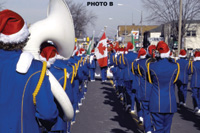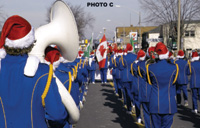Sigma SD10 Digital Camera
New Full Color Foveon X3 Pro Sensor In A Full Featured SLR
Best known for its vast line
of lenses with sophisticated technology, Sigma also manufactures 35mm
and digital SLR cameras. Their latest digital SLR, the SD10, is an improved
version of the earlier SD9 employing an enhanced Foveon X3 sensor detailed
in the technology sidebar. This is also a Conventional Capabilities
|
|||||
Digital Capabilities Essential Software How It Compares Final Evaluation |
|||||
Unique Foveon X3 Technology:
The "Megasensor" Debate Technical Specifications
For more information on the SD10, visit Sigma's website at: www.sigma-photo.com. Peter K. Burian, a free-lancer stock photographer and long-time "Shutterbug" and "eDigitalPHOTO" contributor, is the author of a new book, "Mastering Digital Photography and Imaging" (Sybex, March 2004). Covering all aspects of the topic--the technology, equipment, and techniques--this book provides 300 pages of practical advice for photo enthusiasts. |







































